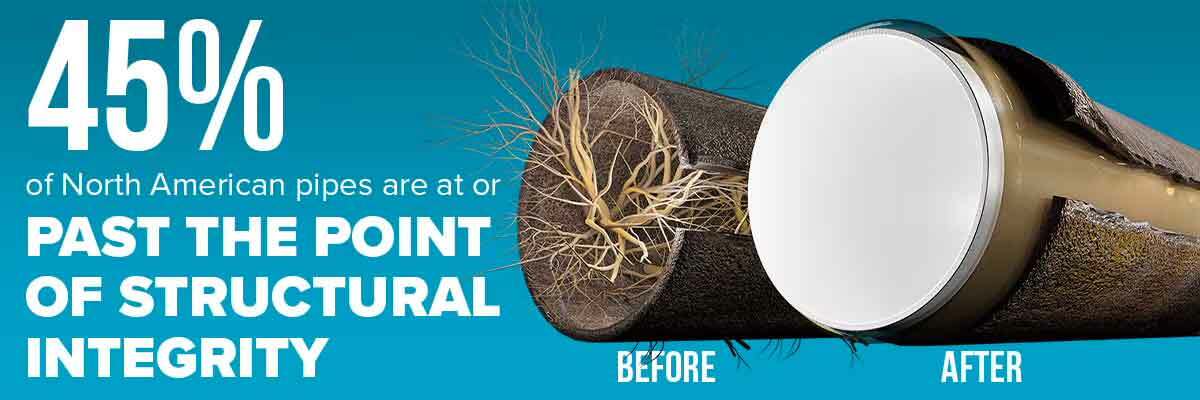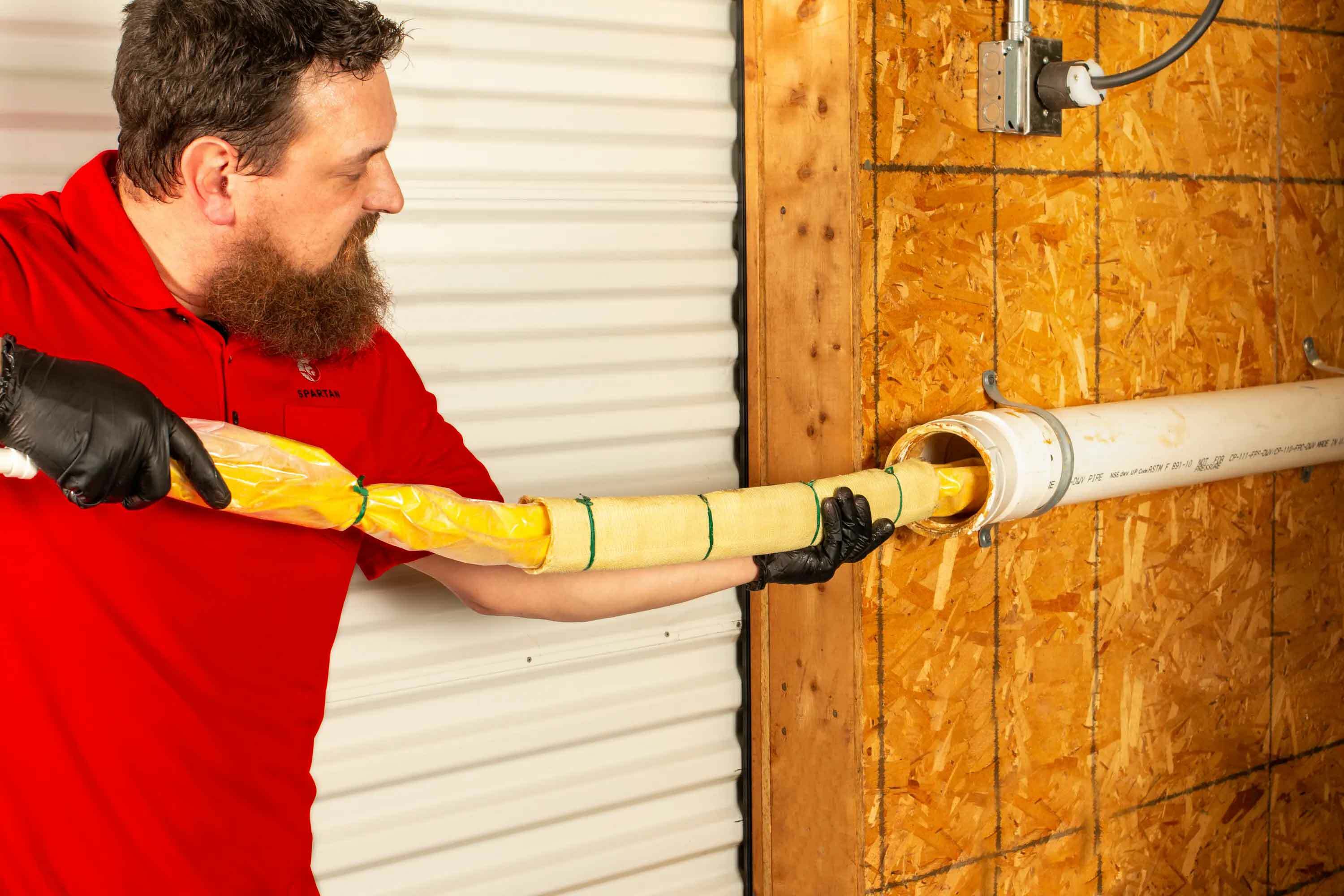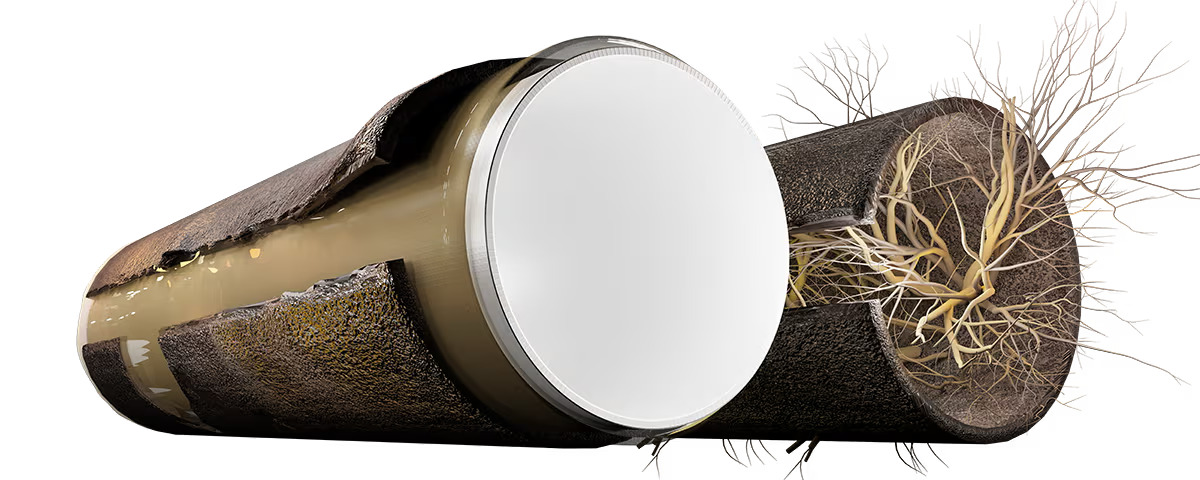As a plumbing business owner, you're familiar with the headache that comes with damaged pipes. Whether it's due to aging, wear and tear, root intrusion, or other factors, pipe problems can be costly and disruptive for the property owner. Fortunately, there's a solution you can offer your customer that doesn't involve extensive digging and excavation: pipe patch. In this blog post, we'll explore what pipe patch is, how it works, when you should consider it, what types of pipes can be repaired, and the numerous benefits it offers.

What is Pipe Patch?
Pipe Patch is a Solution for Repairing Damaged Pipes
Pipe patch is a cutting-edge solution for repairing damaged pipes. Drain cleaning can remove obstructions but can't prevent further problems, such as root intrusion. Pipe patching tackles the root cause of the issue, fixing damaged pipes without the need for costly, time-consuming digging, which can cause damage to your home, yard, landscaping, or utilities.
Pipe Patch Repairs Damaged Pipes Without Digging
One of the most significant advantages of pipe patching is that it doesn't require excavation. This means your customers’ property remains intact, and you won't have to deal with the mess and inconvenience associated with digging up their yard or driveway. Pipe patching is especially useful for pipes located under foundations or in other hard-to-reach areas that are inaccessible even with traditional digging.

How Does Pipe Patching Work?
Repair Material
Pipe patching involves the use of specialized materials, including:
- Fiberglass Liner Material: This material acts as a strong, durable reinforcement for your damaged pipe.
- Resin: Resin is used to bond the liner material to the damaged pipe and create a secure seal.
- Bladder: A bladder is inserted into the damaged pipe and inflated to press the liner material against the inner wall of the pipe, ensuring a tight fit.
What is the pipe patch process?
While the specifics of the repair will vary based on which pipe patch system you choose, each installation will follow the same basic process.
Step 1: Prepare the Pipe
Before patching, the damaged pipe must be thoroughly cleaned. This is typically done with a hydro jetter or a flex shaft machine. An inspection with a sewer inspection camera is also conducted to assess the extent of the damage.
Step 2: Prepare the Packer and Perform a Practice Run
A packer, which holds the bladder and liner material, is prepared for installation. A practice run is often performed to ensure that everything is in order before the actual patching begins.
Step 3: Prepare the Packer and Patch and Install
The packer, bladder, and liner material are inserted into the damaged pipe. Once in place, the bladder is inflated, pressing the liner material against the inner pipe walls, creating a new, structurally sound inner surface.
Step 4: Wait for the Curing Process to Complete
After installation, the resin needs time to cure and harden, creating a permanent seal. This curing process can take anywhere from 10 minutes to a few hours, depending on the type of patch system being used.
Step 5: After Curing, Remove the Packer and Inspect with a Sewer Inspection Camera
Once the curing process is complete, the packer is removed, and a sewer inspection camera is used again to ensure that the patch has been successful.

When Should I Consider Pipe Patch?
You should consider pipe patching anytime it is necessary to perform a pipe repair below grade or with limited access. Whether your damaged pipe is beneath your home's foundation or buried deep within your property, pipe patching can be a viable solution.
What Types of Pipes Can Be Repaired with Pipe Patch?
Pipe patch is a versatile solution and can be used to repair pipes made from any material commonly used in residential or commercial DWV (drain, waste, and vent) systems. This includes materials like PVC, cast iron, clay, and more.

What Are the Benefits of Pipe Patch?
Cost-effective
Compared to traditional excavation and pipe replacement methods, pipe patching is cost-effective. It saves you money on labor, equipment, and repair materials.
Low Impact and Environmentally Safe
Since pipe patching doesn't require extensive digging, it has a minimal impact on your property and the environment. There's no need to disrupt your landscaping or risk damaging underground utilities.
Requires Minimal Equipment
Pipe patching requires far less equipment compared to traditional digging and replacement methods, making it a more efficient and straightforward process.
Requires Minimal Training
Professionals can quickly learn how to perform pipe patching, making it an accessible repair method for plumbing experts.
Long Service Life
Once a pipe has been patched, it can offer a service life of up to 50 years, ensuring long-lasting reliability.
In conclusion, pipe patching is a game-changing solution for repairing damaged pipes that offers numerous advantages, from cost-effectiveness to minimal environmental impact. Whether you're dealing with a troublesome pipe under your home or in a hard-to-reach location, consider pipe patching as a viable and efficient option for restoring your plumbing system to optimal condition.
 US Dollars
US Dollars


